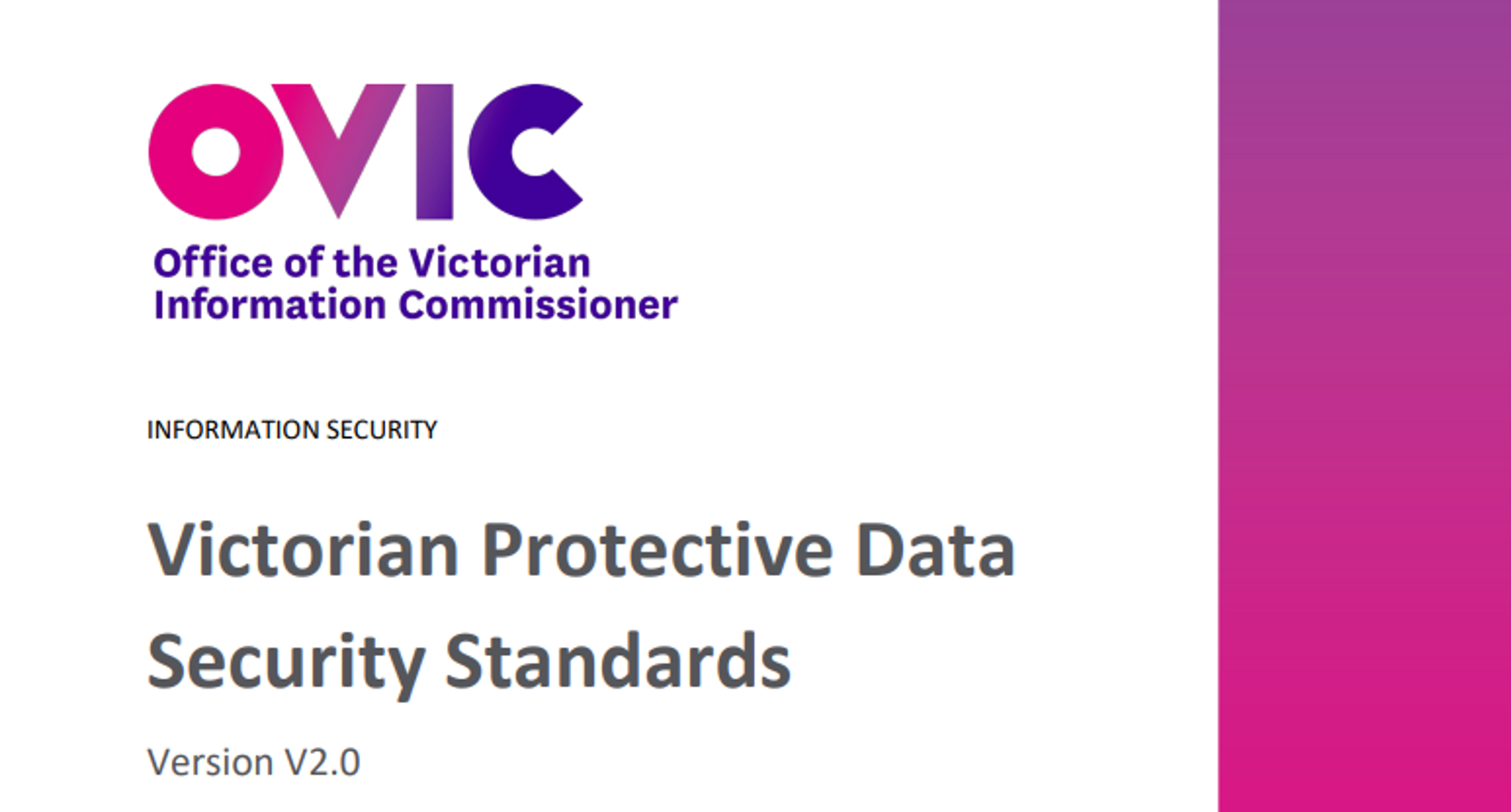Victorian Protective Data Security Standards V2.0 Summary
The Victorian Protective Data Security Standards (VPDSS) describe how the Victorian Government aims to protect public sector information and form part of the Victorian Protective Data Security Framework (VPDSF), a scheme for managing data security risks in Victoria’s public sector. V2.0 of the standards were issued in July 2016 in accordance with the Privacy and Data Protection Act 2014 (Vic).
The VPDSS reflect national and international approaches to security such as ISO, ISM and the Essential Eight but are tailored to the Victorian government environment. The VPDSS provides a set of criteria to enable efficient, effective, and economic investment in security measures through a risk-managed approach.
The Objectives of the VPDSS
Within the VPDSS, there are 12 high-level data security standards for Victorian public-sector organisations. Each of these requirements is supported by security measures (or risk-based practices) to aid public sector organisations in assessing their security controls against new and evolving threats. Ultimately, the VPDSS aims to help organisations with the following:
- Managing public sector information throughout its lifecycle from creation to deletion
- Securing public sector information across key areas, including governance, information, personnel, Information Communications Technology (ICT) and physical.
- Managing security risks to the confidentiality, integrity, and availability of public sector information.
- Governing external parties with access to public sector information.
- Distributing public sector information with other organisations with confidence.
- Minimising the risk and frequency of security incidents.
What the Standards Cover
The VPDSS cover the management of public sector information across the following five key areas:
- Governance - including investing in security management, making use of a risk-based approach, enforcing security policies and procedures, training public sector employees, implementing business continuity and disaster recovery plans, and managing external parties.
- Information Security - protecting information across the whole information lifecycle from the moment that information is created to when it’s disposed of or destroyed.
- Personnel Security - managing the people accessing public sector information and ensuring their continued eligibility and suitability.
- ICT Security - implementing security communications and technology systems to process and store public sector information.
- Physical Security - securing the physical environment, including facilities, equipment, and services, to ensure information is protected at all times.
What the Standards Achieve
The Standards support a security governance approach that encourages organisations to identify and manage their risks relevant to its size, resources, and risk posture. While the VPDSS reflects national and international approaches to security, they are tailored to the specific needs of the Victorian government environment. The leads to better decision-making, supports business objectives, and facilitates effective information sharing while protecting sensitive information. In this way, the standards deliver greater:
- Awareness of the policy and operational responsibilities of the Victoria government
- Respect for the role that public sector organisations have in delivering key services
- Focus on the security of public selector information
- Adherence of contracted service providers to the standards
How to Implement and Adhere to the VPDSS
The VPDSS applies to public sector agencies, bodies involved with public administration as well as service providers and third parties. Section 84 of the PDP Act defines all organisations that the VPDSS are relevant to.
If you would like advice on risk management or how to effectively implement and adhere to VPDSS V2.0, reach out to the experts at InfoTrust today.
see our
Related resources
Mimecast recently released its State of Email Security Report for 2021. The fifth edition of its annual report used interviews with over twelve hundred of information technology and cybersecurity professionals across the globe to gather vital cybersecurity insights. The report offers an insight into the latest email threats along with advice on how to build cyber resilience and mitigate the risks of email-borne attacks.
Cyber attacks and data breaches have been commonplace in the news headlines for some time now. Although a warning from the media is certainly helpful, there is so much more that can be done when it comes to threat intelligence sharing. Threat intelligence sharing is an important part of the global cybersecurity community effort to tackle cybercrime and should form a part of every organisation’s cybersecurity strategy. Sharing cyber threat intelligence enables organisations to make informed decisions about their cybersecurity, building more effective and robust cyber defences.
One of my favourite annual reports to read is the Verizon Data Breach Investigations Report. It’s packed full of insights about the threat landscape and security leaders, in my opinion, should read this report to get a pulse on what’s happening in cyber-scape.
After all, as cyber leaders, we are here to stop breaches – so the insights gained from real cyber incidents and breaches is gold in learning how to tighten up our defences.
All businesses, large and small, are under increasing pressure to demonstrate that they are managing the risk of cyberattacks. This means having the right processes and controls in place to identify risks and vulnerabilities, protect information, as well as detect, respond, and recover in the event of cybersecurity incidents. As such, many businesses are turning to certification authorities and security frameworks to demonstrate privacy and security best practice and achieve compliance with regulatory bodies. System and Organisation Controls (SOC 2) is one such compliance framework that can help organisations to create a structured approach to cybersecurity.
Frost & Sullivan has recently released its 2021 Frost Radar: Email Security report, where its findings provide a benchmarking framework to help businesses protect their email from cyber threats.
As we operate in an increasingly digital world, every business collect, store, and share more and more data. And, amongst that data is personal information. With the OAIC marking this year’s Privacy Awareness Week (PAW) from Monday 3 May to Sunday 9 May 2021, it’s time for us all to review how we protect our customers’ personal information.
We're Here To Help

